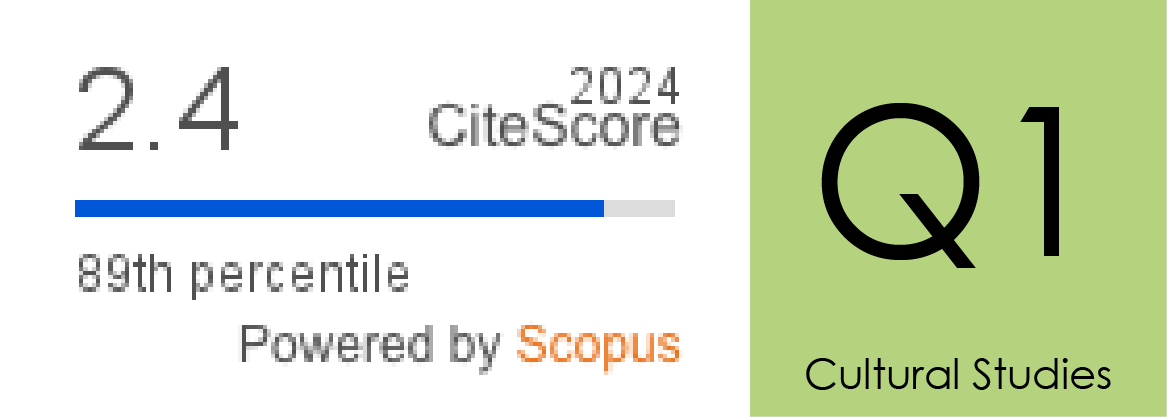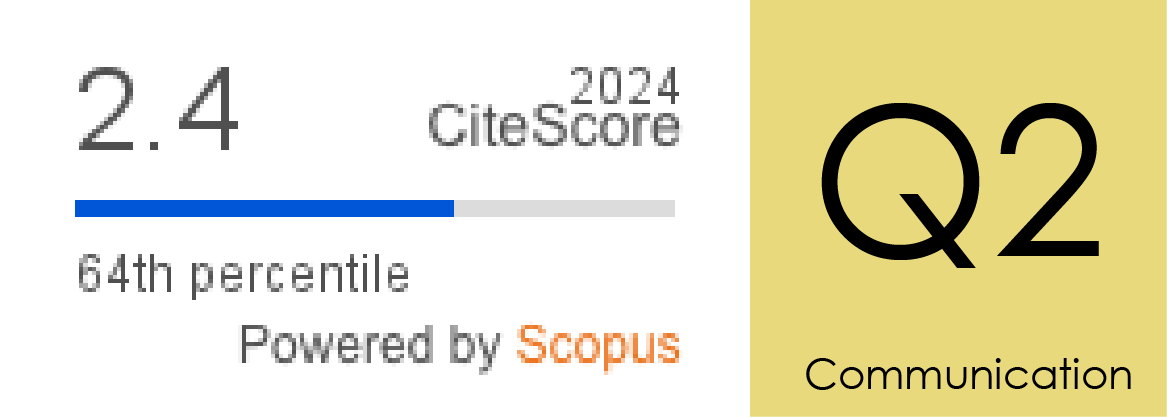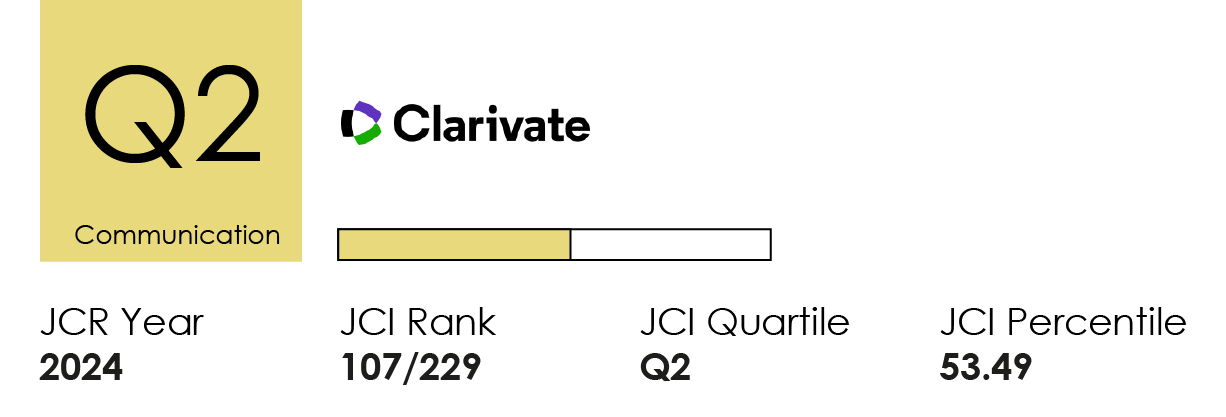Atraer a los menores con entretenimiento: nuevas formas de comunicación de marca en el móvil
DOI:
https://doi.org/10.14198/MEDCOM.20568Palabras clave:
menores, teléfono móvil, comunicaciones de marca, entretenimiento, juegos online, influencersResumen
Entretenerse es una de las prioridades que los menores buscan satisfacer en internet, también a través de sus teléfonos móviles. A esta necesidad que tradicionalmente han cubierto otros medios, responde el entorno digital con nuevas fórmulas que combinan entretenimiento con otros intereses, como los comerciales. Esta publicidad híbrida parece encontrar un buen acomodo entre los juegos online y los contenidos generados por influencers, destinos preferidos por los menores hoy en sus pautas de navegación. A través de una metodología cualitativa, con entrevistas a 20 menores del Área Metropolitana de Santiago de Chile, se busca comprobar en qué medida las preguntas planteadas por la investigación previa sobre este tema se validan. Entre los resultados destaca que, efectivamente, las comunicaciones de marca están presentes de manera clara en las experiencias de entretenimiento online de los más pequeños, que se muestran particularmente receptivos cuando aportan un valor añadido y sienten que las controlan. La familiaridad generada por los influencers con su audiencia también hace que los menores vean las comunicaciones comerciales de manera relajada. Esto plantea preguntas relevantes sobre si la alfabetización publicitaria de este grupo de edad está a la altura de los retos que plantea este escenario.
Financiación
Comisión Nacional de Investigación Científica y Tecnológica (Conicyt) del Gobierno de Chile, Plan Propio de Investigación de la Universidad Internacional de la Rioja (UNIR), bienio 2020-2022Citas
An, S. & Kang, H. (2014). Advertising or games? Advergames on the internet gaming sites targeting children. International Journal of Advertising, 33(3), 509-532. https://doi.org/g2qr
An, S.; Jin, H. S. & Park, E. H. (2014). Children's advertising literacy for advergames: Perception of the game as advertising. Journal of Advertising, 43(1), 63-72. https://doi.org/g2qs
Andersen, L. P.; Tufte, B.; Rasmussen, J. & Chan, K. (2008). The Tweens Market and Responses to Advertising in Denmark and Hong Kong. Young Consumers, 9(3), 189-200. https://doi.org/d9bt99
Berger, A. (1998). Media research techniques. London: Sage Publications.
Boyatzis, R. (1995). Transforming qualitative information: Analysis and code development. London: Sage Publications.
Cabello, P.; Claro, M.; Lazcano, D. y Antezana, L. (2018). La inclusión digital de niños y adolescentes chilenos desde la perspectiva de usos y habilidades. En Jiménez, E.; Garmendia, M. y Casado, M. Á. (Eds.), Entre Selfies y Whatsapps. Oportunidades y riesgos para la infancia y la adolescencia conectada (pp. 259-278). Barcelona: Gedisa.
Cabello, P.; Claro, M.; Rojas, R. & Trucco, M. (2020). Children’s and adolescents’ digital access in Chile: The role of digital access modalities in digital uses and skills. Journal of Children and Media, 1-19. https://doi.org/g2qt
Chen, Y.; Zhu, S.; Xu, H. & Zhou, Y. (2013). Children’s Exposure to Mobile In-App Advertising: An Analysis of Content Appropriateness. In Proceedings of the SocialCom 2013, International Conference on Social Computing (pp. 196-203). Washington D. C.: Institute of Electrical and Electronics Engineers. https://doi.org/g2qv
Chu, M. T.; Blades, M. & Herbert J. (2014). The Development of Children’s Scepticism About Advertising. In Blades, M.; Oates, C.; Blumberg, F. y Gunter, B. (Eds.), Advertising to children: New directions, new media (pp. 38-49). New York: Springer. https://doi.org/g2qw
Del Moral, M. E. & Guzmán, A. P. (2014). CityVille: collaborative game play, communication and skill development in social networks. Journal of New Approaches in Educational Research, 3(1), 11-19. https://doi.org/g2qx
Del Moral, M. E.; Villalustre-Martínez, L. y Neira-Piñeiro, M. R. (2016). Estrategias publicitarias para jóvenes: advergaming, redes sociales y realidad aumentada. Revista Mediterránea de Comunicación, 7(1), 47-62. https://doi.org/gxxj
Elorriaga, A. y Monge, S. (2018). La profesionalización de los YouTubers: el caso de Verdeliss y las marcas. Revista Latina de Comunicación Social, 73, 37-54. https://doi.org/g2q2
Emarketer (2015). Mobile Internet Ad Spending in Chile, 2014-2019 (millions, % change and % of digital ad spending). https://bit.ly/3iQp1ge
Feijoo, B.; Fernández-Gómez, E. y Sádaba, C. (2021). El móvil como nuevo cuarto de juegos: Comparativa de la percepción del consumo de YouTube y videojuegos entre menores chilenos/as y sus padres/madres. Revista Prisma Social, 34, 146–164. https://bit.ly/3zO0QVK
Feijoo, B. y García, A. (2019). Actitud del menor ante la publicidad que recibe a través de los dispositivos móviles. adComunica. Revista Científica de Estrategias, Tendencias e Innovación en Comunicación, 18, 199-218. https://doi.org/g2q3
Feijoo, B. & Sádaba, C. (2020). Is my kid that naive? Parents’ perceptions of their children’s attitudes towards advertising on smartphones in Chile. Journal of Children and Media. https://doi.org/g2q4
Feijoo, B. & Sádaba, C. (2021). The Relationship of Chilean Minors with Brands and Influencers on Social Networks. Sustainability, 13(5), 2822. https://doi.org/g2q5
Feijoo, B.; Sádaba, C. y Bugueño, S. (2020). Anuncios entre vídeos, juegos y fotos. Impacto publicitario que recibe el menor a través del teléfono móvil. Profesional de la Información, 2, 1-15. https://doi.org/gj8dbx
Hudders, L.; De Pauw, P.; Cauberghe, V.; Panic, K.; Zarouali, B. & Rozendaal, E. (2017). Shedding new light on how advertising literacy can affect children's processing of embedded advertising formats: a future research agenda. Journal of Advertising, 46(2), 333-349. https://doi.org/g2q6
Jin, S. V. & Muqaddam, A. (2019). Product placement 2.0: “Do brands need influencers, or do influencers need brands?”. Journal of Brand Management, 26(5), 522-537. https://doi.org/gg9sv9
Kabali, H.; Irigoyen, M.; Nunez-Davis, R.; Budacki, J.; Mohanty, S.; Leister, K. & Bonner, R. (2015). Exposure and use of mobile media devices by young children. Pediatrics, 136(6), 1044-1050. https://doi.org/gd7hh6
Lou, C. & Yuan, S. (2019). Influencer marketing: how message value and credibility affect consumer trust of branded content on social media. Journal of Interactive Advertising, 19(1), 58-73. https://doi.org/ggn9pw
Lou, C.; Tan, S. S. & Chen, X. (2019). Investigating consumer engagement with influencer-vs. brand-promoted ads: The roles of source and disclosure. Journal of Interactive Advertising, 19(3), 169-186. https://doi.org/gk5fhv
Mallinckrodt, V. & Mizerski, D. (2007). The Effects of Playing an Advergame on Young Children’s Perceptions, Preferences, and Requests. Journal of Advertising, 36(2), 87–100. https://doi.org/dsz284
Martí Parreño, J.; Sanz-Blas, S.; Ruiz-Mafé, C. & Aldás-Manzano, J. (2013). Key factors of teenagers' mobile advertising acceptance. Industrial Management y Data Systems, 113(5), 732-749. https://doi.org/g2q7
Martínez, C.; Jarlbro, G. & Sandberg, H. (2013). Children’s views and practices regarding online advertising. Nordicom Review, 34(2), 107-122. https://doi.org/g2q8
Mascheroni, G. & Ólafsson, K. (2014). Net Children Go Mobile: risks and opportunities. Milán: Educatt. https://bit.ly/3mCNabu
Méndiz, A. (2010). Advergaming. Concepto, tipología, estrategias y evolución histórica. Revista Icono14, 8(1), 37-58. https://doi.org/g2q9
Nelson, M. & Waiguny, M. (2012). Psychological Processing of In-Game Advertising and Advergaming: Branded Entertainment or Entertaining Persuasion? In Shrum, L. J. (Ed.), Psychology of entertainment media: Blurring the lines between Entertainment and Persuasion (pp. 93-146). London: Routledge.
Núñez-Gómez, P.; Sánchez-Herrera, J. & Pintado-Blanco, T. (2020). Children’s Engagement with Brands: From Social Media Consumption to Brand Preference and Loyalty. Sustainability, 12(22), 9337. https://doi.org/gsd6
Oates, C.; Newman, N. & Tziortzi, A. (2014). Parent´s beliefs about, and attitudes towards, marketing to children. In Blades, M.; Oates, C.; Blumberg, F. y Gunter, B. (Eds.), Advertising to children: New directions, new media (pp.115-136). New York: Springer. https://doi.org/g2qw
Okazaki, S. & Yagüe, M. J. (2012). Responses to an advergaming campaign on a mobile social networking site: An initial research report. Computers in Human Behavior, 28(1), 78-86. https://doi.org/dc7v36
Ramos, M. (2006). Cuando la marca ofrece entretenimiento: aproximación al concepto de advertainment. Questiones publicitarias, 11(1), 33-49. https://bit.ly/3DpPyJi
Rifon, N. J.; Taylor Quilliam, E.; Paek, H. J.; Weatherspoon, L. J.; Kim, S. K. & Smreker, K. C. (2014). Age-dependent effects of food advergame brand integration and interactivity. International Journal of Advertising, 33(3), 475-508. https://doi.org/g2rb
Rosenblum, K. (1987). The in-depth interview: Between science and sociability. Sociological Forum, 2(2), 388-400. https://bit.ly/3Dyh1Zv
Rozendaal, E.; Slot, N.; van Reijmersdal, E. A. & Buijzen, M. (2013). Children's responses to advertising in social games. Journal of Advertising, 42(2-3), 142-154. https://doi.org/g2rc
San Miguel, P. (2020). Influencer Marketing: Conecta tu marca con tu público. Madrid: LID Editorial.
Sandberg, H. (2011). Tiger Talk and Candy King: Marketing of Unhealthy Food and Beverages to Swedish Children. Communications – European Journal of Communication Research, 36(2), 217-244. https://doi.org/dwwsw7
Soengas, X.; Vivar, H. y Abuín N. (2015). Del consumidor analógico al digital. Nuevas estrategias de publicidad y marketing para una sociedad hiperconectada. Telos: Revista de Pensamiento sobre Comunicación, Tecnología y Sociedad, 101, 115-124. https://bit.ly/3DqOTal
Steffen, C.; Mau, G. & Schramm-Klein, H. (2013). Who is the loser when I lose the game? Does losing an advergame have a negative impact on the perception of the brand?. Journal of Advertising, 42(2-3), 183-195. https://doi.org/g2rd
Subtel (2020). Informe Semestral del Sector Telecomunicaciones – Primer Semestre 2020. https://bit.ly/3sCkIav
Terlutter, R. & Capella, M. L. (2013). The gamification of advertising: analysis and research directions of in-game advertising, advergames, and advertising in social network games. Journal of Advertising, 42(2-3), 95-112. https://doi.org/4sc
Trivedi, J. & Sama, R. (2020). The effect of influencer marketing on consumers’ brand admiration and online purchase intentions: An emerging market perspective. Journal of Internet Commerce, 19(1), 103-124. https://doi.org/gg9swc
Tur-Viñes, V. y Segarra, J. (2014). Branded content y storytelling. El arte de crear contenidos y contar historias. En Ron, R.; Álvarez, Antón, A. y Núñez, P. (Coords.), Bajo la influencia del branded content. Efectos de los contenidos de marca en niños y jóvenes (pp. 117-136). Madrid: ESIC.
Van Deursen, A. J. A. M.; Helsper, E. J. & Eynon, R. (2016). Development and validation of the Internet Skills Scale (ISS). Information, Communication and Society, 19(6), 804–23. https://doi.org/gg24p9
Van Reijmersdal, E. A.; Rozendaal, E. & Buijzen, M. (2012). Effects of prominence, involvement, and persuasion knowledge on children's cognitive and affective responses to advergames. Journal of Interactive Marketing, 26(1), 33-42. https://doi.org/bnmjnb
Van Reijmersdal, E. A.; Rozendaal, E.; Smink, N.; Van Noort, G. & Buijzen, M. (2017). Processes and effects of targeted online advertising among children. International Journal of Advertising, 36(3), 396-414. https://doi.org/g2rp
Vanwesenbeeck, I.; Walrave, M. & Ponnet, K. (2017). Children and advergames: the role of product involvement, prior brand attitude, persuasion knowledge and game attitude in purchase intentions and changing attitudes. International Journal of Advertising, 36(4), 520-541. https://doi.org/gk5ffs
Weiss R. (2014). Influencer marketing. How word-of-mouth marketing can strengthen your organization's brand. Marketing health services, 34(1), 16–17.
Xiao, M.; Wang, R. & Chan-Olmsted, S. (2018). Factors affecting YouTube influencer marketing credibility: a heuristic-systematic model. Journal of media business studies, 15(3), 188-213. https://doi.org/ghhzhr
Zarouali, B.; De Pauw, P.; Ponnet, K.; Walrave, M.; Poels, K.; Cauberghe, V. & Hudders, L. (2019). Considering children’s advertising literacy from a methodological point of view: Past practices and future recommendations. Journal of Current Issues y Research in Advertising, 40(2), 196-213. https://doi.org/g2rq
Descargas
Estadísticas
Publicado
Cómo citar
Número
Sección
Licencia
Derechos de autor 2018 Charo Sádaba, Beatriz Feijoo

Esta obra está bajo una licencia internacional Creative Commons Atribución 4.0.
Los autores y autoras que publican en esta revista están de acuerdo con los siguientes términos:
1 Derechos de autor. Los autores y autoras conservan sus derechos de autor, aunque ceden a la revista de forma no exclusiva los derechos de explotación (reproducción, distribución, comunicación pública y transformación) y garantizan a esta el derecho de primera publicación de su trabajo, el cual estará simultáneamente sujeto a la licencia indicada en punto 2. Los autores pueden establecer otros acuerdos adicionales para la distribución no exclusiva de la versión de la obra publicada en la revista, siempre que exista un reconocimiento de su publicación inicial en esta revista.
© Los autores.
2 Licencia. Los trabajos se publican en la revista sujetos a la licencia de Reconocimiento 4.0 Internacional de Creative Commons (CC BY 4.0); los términos se pueden consultar en https://creativecommons.org/licenses/by/4.0/
Esta licencia permite a terceros compartir (copiar y redistribuir el material en cualquier medio o formato) y adaptar (remezclar, transformar y crear a partir del material para cualquier finalidad, incluso comercial), siempre que se reconozca la autoría y la primera publicación en esta revista (Revista Mediterránea de Comunicación (RMC) / Mediterranean Journal of Communication (MJC), Universidad de Alicante, DOI de la obra), se proporcione un enlace a la licencia y se indique si se han realizado cambios en la obra.
3 Política de autoarchivo. Se recomienda a los autores que difundan sus trabajos a través de Internet para favorecer una circulación y difusión más rápidas y, con ello, un posible aumento en la citación y alcance entre la comunidad científica y académica, en las siguientes condiciones:
No se permite a los autores depositar en un repositorio institucional o temático, página web propia, etc., las versiones preprint (versión antes de ser evaluada) o postprint (versión evaluada y aceptada para su publicación) de sus trabajos antes de su publicación, pero sí el artículo final publicado (versión del editor).













